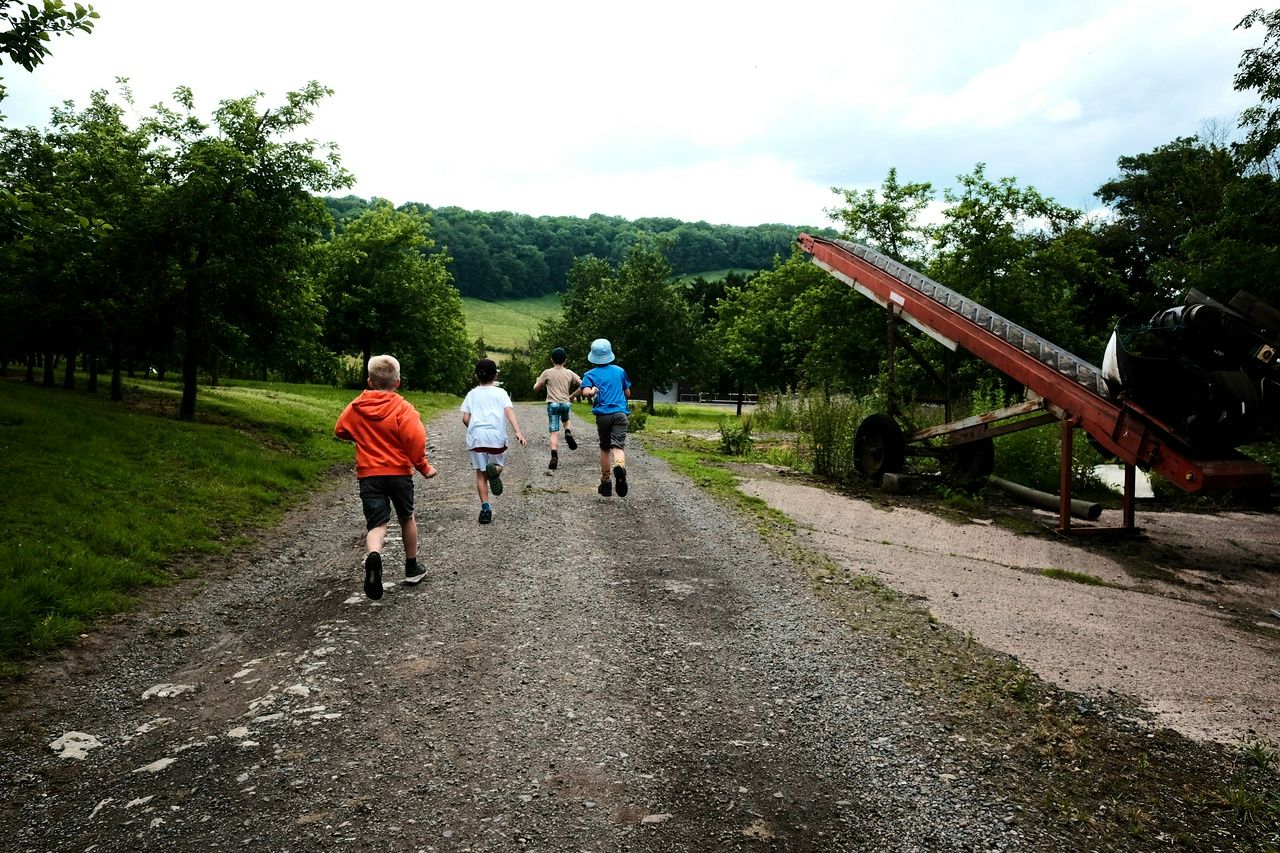It’s time to set kids free from cars
We’ve created a society where kids don't travel actively or independently, and it’s affecting their wellbeing.

“When I suggest they park around the corner instead, they complain that their kids can’t walk that far,” says Mrs M, the crossing supervisor at my son’s school, reporting on what happens when she challenges parents who park illegally outside the gates.
The scene at drop-off and pick-up times reminds me of a psychology experiment in which the participants have been instructed to act entirely selfishly. They swing their cars across the road, mounting the pavement where people are walking and blocking half of it to secure a parking space as close to the school as possible. The more brazen dump their cars on the white zig-zag lines at the zebra crossing, on which parking is illegal because it blocks sight lines.
Sadly, this isn’t a psychology experiment; it’s the reality outside our local primary school – and tens of thousands like it across the UK. A lot of kids are driven short distances to school, with few walking and even fewer cycling. Once they’re at school there’s a bare minimum of physical activity. Maybe a bit of half-hearted PE. Then they’re driven home, where they entertain themselves with TV or computer games. According to NHS data, 42% of children get less than half the recommended hour of physical activity a day.
These are the indoor children, as Dr Lia Karsten, an associate professor of urban geography at the University of Amsterdam, has dubbed them. Her research has shown how, as motorised traffic has increased, children have been pushed from outdoor play to indoor spaces. The street outside their house is too busy to be safe. The road at the end of their street is too busy for them to cross unsupervised to get to the park.
Of course, lots of kids do after-school and weekend activities. But these tend to be formal, accompanied and paid for: swimming lessons, dancing lessons, football training. And the children are shuttled from one to the other in their parents’ cars. Karsten calls them the backseat generation.
For these car-bound kids, it seems that no amount of organised activities can make up for the exercise they miss out on by not walking, scooting or cycling around. A study found that 10-year-olds in England were 20% weaker and had 30% less muscle endurance in 2014 compared to children of the same age measured in 1998. The difference, scientists believe, is almost certainly down to sedentary lifestyles. This matters because physical strength has been linked to everything from brain function to higher self-esteem.
When my wife and I choose activities for my son G, who’s nine years old, we try to pick ones we can walk or bike to. We walk to school in ten minutes, and cycle to his cricket practice in five. Fellow parents enthuse about the swimming lessons in a pool eight miles away, but there’s a perfectly good pool within easy cycling distance of our house. So we go there, because, for us, riding is part of the fun.
On swimming lesson night, G and I jump on our bikes and take a route that cuts across a section of common before following back roads all the way to the leisure centre. There’s some climbing and some descending, which means G gets a good warm-up and we also get to enjoy the downhill sections, the whirr of our freehubs cutting through the dark evenings. Before long, we swing right and park in the bike racks right by the centre entrance. It’s actually quicker than driving.
What could be better than this? Well, in an ideal world, G would soon be able to do journeys like this on his own. But the dominance of motor traffic and the risk it creates mean we will have to accompany him for years to come. He’ll be missing out on an important experience: when children travel actively and independently they get important cognitive, psychological and social benefits.
“By being less accompanied, children and young people increase their learning of how to negotiate with their surroundings in their own way,” researcher Manuela Ferreira Torres explained in an article for the Urban Cycling Institute. “Besides the acquisition of spatial knowledge, the exposure to our social and spatial environments correlates strongly with characteristics such as sense of place, mutual trust, and feeling part of a larger whole.”
It seems crazy that, with our children’s future health and wellbeing depending on it, we’re unwilling to change how we get around our towns and cities. Why isn’t there more segregated cycling infrastructure? Why don’t we have universal 20mph limits? Why aren’t school streets – where the road outside a school is closed briefly around drop-off and pick-up – commonplace?
It comes down to political will. The Tories are in power and they rely on the votes of people who identify as motorists. As political commentator John Oxley puts it, the result is that: “The party ends up with a petrol-headed populism, which, rather than supporting individualism, instead takes away freedom of choice, as public and human-powered transport options are squeezed out by car dominance. Driving as an identity overtakes the need for more, nicer, transport options.”
Hopefully, our leaders will one day see sense – as those in the Netherlands did decades ago. It too had car-choked streets, until a grass-roots campaign forced the political establishment to rip up entrenched ideas. Now two-thirds of Dutch children walk or cycle to school. It’s time the UK did the same and set our kids free from cars.

